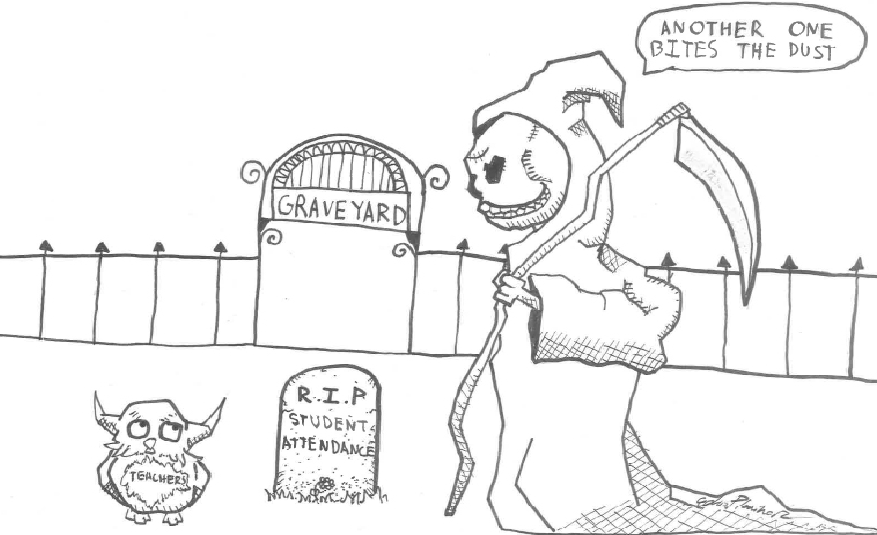After the covid epidemic, AT faced a rise in the frequency of student absences. The issue became a topic of discussion and was given the label of ‘chronic.’ However, now that we are in the second semester of the second year of everyone being in person once again, it has begged the question, is AT still suffering from chronic absenteeism?

Chronic absenteeism is defined as a single student missing 10 percent of a school year. In Illinois, Chronic absenteeism jumped to nearly 30 percent as of 2022. The data reveals AT is one of many schools contributing to this trend.
As a whole, the school has an attendance of 90 percent, meaning on average 10 percent of the student population is absent from school every day.
While 10 percent of students missing is not overtly alarming, it is not entirely acceptable. As of last semester, the percentage of attendance was 89.5. Meaning the only difference marking attendance between second and first semesters is a 0.5 percent increase.
The end to chronic absenteeism is a constant uphill climb. This has been a fact recognized by administrators, as well as Principal Jack Andrews since the beginning of the school year.
“Addison Trail has two attendance interventionists who work with individual students, run groups, make recommendations to deans and administration regarding attendance, and more,” said Andrews. “We also have had multiple communications (formal and informal) with students and families regarding our “We CARE, Be HERE” initiative. We have shared the importance of being present in school through multiple platforms including emails, letters home, etc.”
The administrators were given an almost impossible task. Arguably the most difficult part of a disciplinary job is inventing ways to incentivize changed behaviors and habits because humans will always be blatantly stubborn. Additionally, it can be hard to make changes, particularly in the case of absenteeism when students don’t bother to show up for them to be enforced.
“We have an attendance team that meets every two weeks. It is comprised of administration, deans, social workers, and others to discuss our plans/ideas and come up with action plans to roll these initiatives out,” said Andrews.
AT has continued to get a grasp on the issue despite any difficulties.
“During our principal and superintendent advisories we have shared a little about our efforts and students have noticed these efforts. During the spring semester, we host a “Behavior Interventions Committee” which is comprised of students, parents, teachers, and other stakeholders to discuss current discipline practices and other items. Parents can also attend CAC meetings to discuss these topics,” said Andrews.
Although many concerns about absenteeism are valid, some criticisms of the school are easily proven to be false. Many have discussed the issue of field trips contributing to absences, and have gone as far as to say there are more field trips this school year compared to the previous year. However, this is partly a misconception. There is no major increase in the number of field trips, rather the field trips skew the illusion due to the already prevalent absence phenomenon. It is also possible that field trips were less in amount before the pandemic, but there is no recorded value to compare to.
“In 2021-2022 we have 157 field trips requested and in 2022-2023, we have had 159 field trips requested so I believe this to be a perception,” said Andrews.
The best approach that can be taken is continuing to seek out and target those contributing to chronic absenteeism. Missing out on excessive school is deemed chronic for a reason, it seriously impairs a student’s ability to do well in school. Chronic absenteeism could even give further explanation for AT’s low testing scores.
“When I talk to students about attendance I relate it to things like tennis, wrestling, speech, or other individual sports/events. Your success is based on your own preparation and your own circumstances. If your attendance suffers, the person who loses out the most is you,” said Andrews. “I would say for some we have a lot of work to do, while for others they could become more focused on their attendance and see a huge impact rather easily. I will always say, ‘The hardest part is showing up.’ We truly appreciate every day we get to see a student walk through our doors as we know they are committed to their own success.”
The prospects of Blazer attendance are certainly looking up, but there is still a long road ahead before it is resolved.

